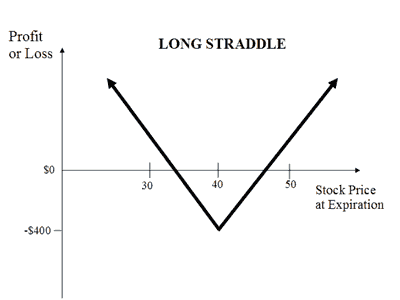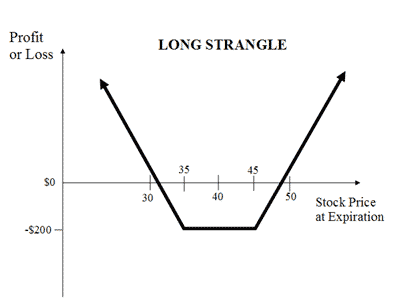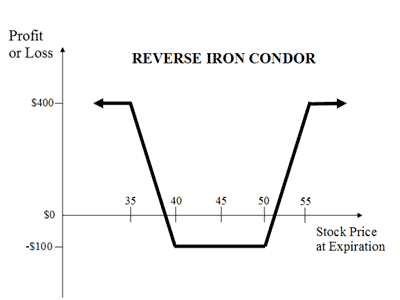
First, a reminder:
Straddle construction:
Buy 1 ATM Call
Buy 1 ATM Put

Strangle construction:
Buy 1 OTM Call
Buy 1 OTM Put

Reverse Iron Condor construction:
Buy 1 OTM Put
Sell 1 OTM Put (Lower Strike)
Buy 1 OTM Call
Sell 1 OTM Call (Higher Strike)

When buying a straddle, we are buying calls and puts with the same strikes and expiration. When buying a strangle, we are buying calls and puts with different strikes. The strangle will have the largest negative theta (as percentage of the trade value, not absolute dollars). Further you go OTM, the bigger the negative theta. If the stock moves, the strangle will benefit the most. If it doesn't it will lose the most. I found that if I have enough time before expiration, deltas in the 25-30 range provide a reasonable compromise.
For lower priced stocks, I would prefer a ATM (At The Money) straddle (buying the same strikes). Strangle on a $20 stock might be very commissions consuming, plus the negative theta might be too big.
Please note that when I'm talking about the theta being larger or smaller, I'm always referring to percentages, not dollar amounts. In absolute dollars, the theta is always be the largest for ATM options. However, since those options are also more expensive in dollar terms, percentage wise the theta will be the smallest.
Generally speaking, dollar P/L is usually similar for strangles and straddles. However, since strangles are cheaper in dollar terms, percentage P/L will be higher for strangles. This applies to both winners and losers, which makes a strangle a more aggressive trade (higher percentage wins but also higher percentage losses). If the stock price moves significantly, strangles will likely produce higher returns. But if the stock doesn't move and IV increase is not enough to offset the negative theta, strangles will also lose more.
For higher priced stocks (over $100) I will usually do RIC. Since you sell a further OTM strangle against the purchased strangle, this reduces the theta of the overall position. It might be the least risky position and still benefit from IV jump like AMZN trade. I prefer to have spreads of $5 for RIC.
Since I don't know what will happen with the stock I play, I prefer to have a mix of all three. In case of a big move, strangles will provide the best returns. When IV is low, RIC will provide some protection against the theta while still having nice gains from time to time.
Remember: those are not homerun trades. You might have a series of breakevens or small losers, but one down day can compensate for the whole month. This is why I want to be prepared when it happens. In August I had 4 doubles in two days (but I played mostly strangles).
When you want to trade earnings and expect a big move, those strategies can provide excellent returns. RIC has limited profit potential, but when the stock moves less than expected, it can provide better returns than straddle or strangle with less risk.
The bottom line:
Strangle is the most aggressive trade, with higher risk and higher reward. It has the highest negative theta (as percentage of the trade price) so it will lose the most if the stock doesn't move and/or IV doesn't increase enough to offset the theta.
RIC is the most conservative trade. Straddle falls in the middle, and many times it provides the best risk/reward.
Let me know if you have any questions.
Related articles
- How We Trade Straddle Option Strategy
- Reverse Iron Condor Strategy
- Why We Sell Our Straddles Before Earnings
Want to learn more? We discuss all our trades on our forum.


Join the conversation
You can post now and register later. If you have an account, sign in now to post with your account.
Note: Your post will require moderator approval before it will be visible.